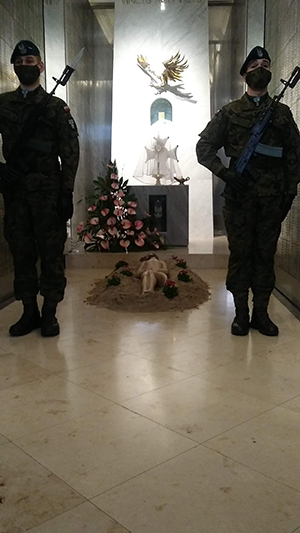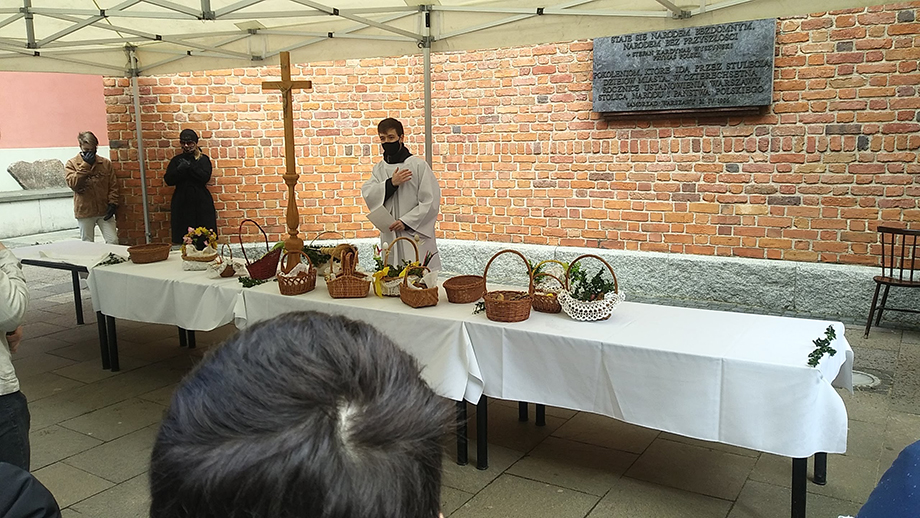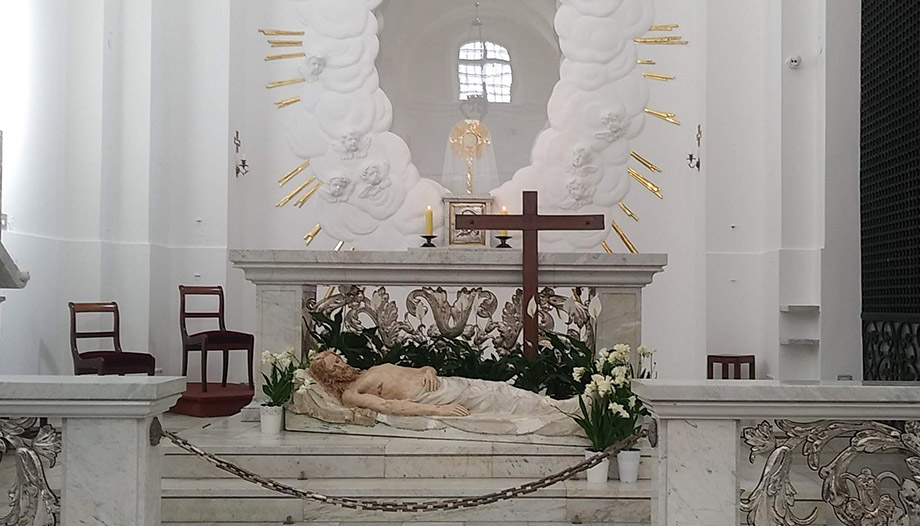




















Poland is really different. This tourist slogan used in the sixties can be said to be very real in the country of St. John Paul II, as far as the practice of the Christian faith by the faithful people is concerned.
Last Holy Thursday, I was deeply moved by the Eucharistic celebration of the Chrism Mass in the Co-cathedral of the Diocese of Warsaw-Prague at ten o'clock in the morning. A very careful liturgy, with the Gloria, Sanctus and Angus Dei of the Mass de Angelis, as well as the singing of the Pater Noster in Latin. The entire nave of the Church of St. Mary of Victory was full of priests, I counted more than six hundred, many very young, all in cassock and dressed in alb and white stole.
A devotion lived with the naturalness of one who is praying was palpable. Among the concelebrants, who are in the presbytery, there are three priests celebrating their fiftieth anniversary of priesthood, eleven of the thirty-one who were ordained in Warsaw on May 28, 1972 together with Blessed Martyr Jerzy Popieluszko, and there are also more than twenty priests celebrating their silver jubilee of priesthood. All with their hands together as if they were first communion children.
The idea came to my mind that we priests, when we celebrate or concelebrate, do not know where to put our hands during the ceremony. The simplest and most pious thing to do is to keep them together as so many pious priests used to do in the past and some still do today. At least in the Co-cathedral of Santa Maria de la Victoria today I have seen so many young reverends, and of those who paint gray hair, with their hands piously joined as a sign of prayer.
We prayed especially for the end of the war in Ukraine and we have done it in that temple by an explicit wish of Bishop Romuald. That St. Mary who defended Warsaw from the Soviet army in 1920, the so-called Miracle of the Vistula, may defend today Kijowa and Ukraine from the 'Russian military operation'.
Grób Panski. The tomb of the Lord
Yes, Poland is different and I would now like to comment on two customs introduced into the liturgy of the Church in Poland that respond to a popular desire of the faithful.
I am referring to what in Polish we call the 'Grób Panski' - the tomb of the Lord, at the end of the liturgical celebration of the Lord's Passion on Good Friday and also of the 'święconka'.


Some time ago I commented that in order to better understand the Church in Poland it is necessary to know the meaning and value in society of two words - kolenda and plebanie - now I would like to add two others peculiar to Holy Week - Grób Panski and Święconka.
At the end of the Good Friday liturgy begins what is called 'The Tomb of the Lord'. A procession is made with the Blessed Sacrament in the Monstrance and it is deposited in a prepared chapel in which, together with many different motifs of the religious, social and political life of the country and the world, there is always the representation of the Lord lying and dead. At his side is placed the Monstrance covered with a white veil. Soldiers or firemen stand guard.
Hours depend on each parish. On Friday until midnight and on Saturday from the early hours until one hour before the beginning of the Easter Vigil. During this time, the faithful come to the church to pray and contemplate the mystery of the Death of the Lord in his Tomb together with the adoration of the Blessed Sacrament. In my long years in Poland, I have become convinced of the theological meaning of this popular custom.
Święconka. The blessing of food
Every Holy Saturday has also taken root in me the tradition, as so many Polish families do, to visit the Lord's Tomb in various churches and to go, also on Holy Saturday, to the blessing of food, that is to say to the 'Święconka' which I will explain below what this custom also 'fuori norme' consists of. But first I would like to clarify that the day of the year that most faithful go to Church is precisely the day on which no liturgy is celebrated, Holy Saturday. Really, Poland is different.
Years ago, while living in Krakow, an Aragonese television program called Aragonese around the worldThe program makers were amazed to see the crowds of families in the streets with their food baskets in the churches to receive the priest's blessing and a short homily. The producers of the program were amazed to see the crowds of families in the streets with their baskets of food coming to the churches to receive the priest's blessing together with a short homily explaining the meaning of the Easter feast. The times I have listened to those little talks I have found them to be an impressive mystagogical catechesis.


The main idea is that the faithful participate in the liturgical celebration of Easter and that they are filled with joy, not only in the church, but also in their homes. The presence of the Risen One is invoked so that the whole family sits together to eat the first food of Easter Sunday together with the Lord. And they use, as a sign, those foods that were taken in the basket to be blessed the day before, that is to say, on Holy Saturday.
Święconka is a tradition present in several Catholic countries, including the whole territory of Poland, which consists in blessing various foods on Holy Saturday. Food such as meat, bread, eggs, salt, etc., are placed in wicker baskets and taken to churches where priests bless them during a special service. The blessed food is consumed the next morning during the solemn Easter breakfast.
The blessing imparted by the priest more or less reads as follows: "Lord Jesus, the day before your passion and death, you sent the apostles to prepare the Passover and, on the day of your resurrection, you sat at table with your disciples. We ask you to let us live your presence in faith during Easter Sunday breakfast in our homes. You who are the living Bread, who came down from heaven and give life to the world, bless + this bread as you blessed the loaves you gave to eat to those who listened to you in the desert. Lamb of God, you who have washed the world from sin, bless + this meat and all the food we shall eat in memory of the Passover lamb as you gave your blessing to all the food you ate with the Apostles at the Last Supper. Christ, our life and resurrection, bless + these eggs, sign of new life, so that, in sharing them, we too may share the reciprocal joy of your presence. Open the eyes and hearts of those who suffer because of pandemics or war, help those who serve the poor and the cause of peace and justice in the world. And so may we all enjoy the eternal feast in the Father's house, where you live and reign forever and ever. Amen.












